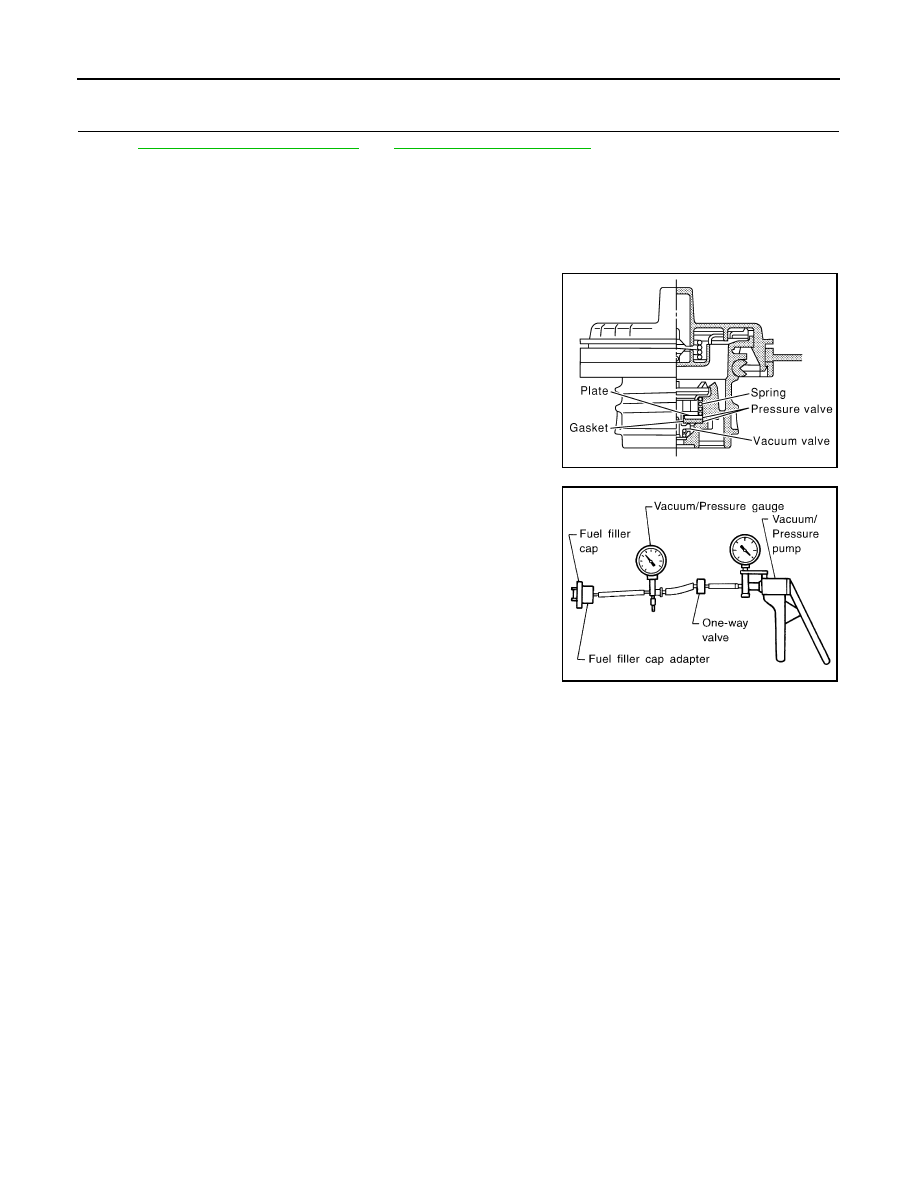Infiniti QX56 (JA60). Manual - part 393

EC-224
< COMPONENT DIAGNOSIS >
[VK56DE]
P0442 EVAP CONTROL SYSTEM
NG
>> Replace fuel level sensor unit.
24.
CHECK INTERMITTENT INCIDENT
GI-35, "How to Check Terminal"
and
GI-38, "Intermittent Incident"
>> INSPECTION END
Component Inspection
INFOID:0000000005149241
FUEL TANK VACUUM RELIEF VALVE (BUILT INTO FUEL FILLER CAP)
1. Wipe clean valve housing.
2. Check valve opening pressure and vacuum.
3. If out of specification, replace fuel filler cap as an assembly.
CAUTION:
Use only a genuine fuel filler cap as a replacement. If an incor-
rect fuel filler cap is used, the MIL may come on.
SEF445Y
Pressure: 15.3 - 20.0 kPa (0.156 - 0.204 kg/cm
2
, 2.22 -
2.90 psi)
Vacuum:
−6.0 to −3.3 kPa (−0.061 to −0.034 kg/cm
2
,
−0.87 to −0.48 psi)
SEF943S